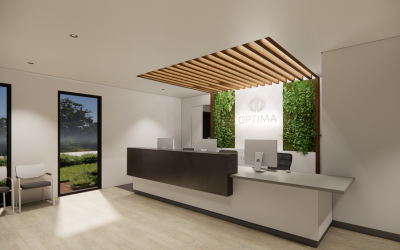Worldwide research shows an alarming incidence of musculoskeletal disorders among dentists, with up to 87% suffering chronic pain and 25% severe pain. Many of us have become accustomed to pain and discomfort, believing it is the price to be paid for being a dentist.
Cumulative Trauma
As dental students, we were highly trained in clinical skills, but there was no training in how to organize our bodies to gain access to our patients’ mouths, without compromising our musculoskeletal health.
So we bend and twist over patients in any which way, without paying attention to ourselves.
Similarly, our physical structure is overlooked whilst sitting at a desk, especially in front of a computer, and in daily life.
Although there are fundamental biomechanical design principles governing movement and posture, we are not trained in how to co-operate with these, and unfortunately we are not provided with a “User Guide” at birth.
Anyone who drives a car knows what happens when you don’t co-operate with its mechanical design. Speeding along a freeway in first gear or going up a steep incline in fourth gear result in engine damage and costly repairs.
We are trained to co-operate with mechanical design by learning to drive the car in the correct gear.
When posture and movement are not co-operating with biomechanical design, cumulative trauma occurs, resulting in occupational musculoskeletal disorders.
Soft tissue damage happens over time at a cellular level, when forward and downwardly directed, unilaterally collapsed postures are held for prolonged periods. Repeated twisting of the torso results in spinal compression and inefficient use of muscles and joints.
This is the reason why there is such a high incidence of chronic pain in the dental profession. Pain and discomfort are late warning signs.
Dental Ergonomics
Ergonomic research and design have focused on our working environment – the Outer Ergonomics, overlooking the importance of our efficiency in posture and movement – the Inner Ergonomics.
How we sit on a stool and bend over the dental chair is as important as the stool and chair design.
The way instruments are held is as important as their shape and weight.
Although ergonomically designed surgery layout, chairs, stools and equipment are important, without knowledge of your Inner Ergonomics – understanding how your body is designed to work – you are literally driving yourself in the wrong gear in clinical practice, at a desk and in everyday activities.
Using an accurate body map
We need to know about our biomechanical design to prevent cumulative trauma. We must understand how our body is designed to move and balance in a gravitational field, remembering that gravity is providing a constant downward pull.
Although anatomy is part of the curriculum at dental school, functional anatomy is not. Functional anatomy is essential for understanding how the body works as we move and hold postures in a gravitational field.
We move according to the mental picture we have of our body, our body map. Unfortunately, most of us have faulty body maps of our joints (these formed in childhood when we played with teddy bears and toy soldiers whose joints were not anatomically correct) which result in harmful posture and movement patterns.
We need to know where our joints are and how they work, in a practical way not just intellectually, and to have it literally imprinted in our body and mind as an accurate body map.
For example, if you map your hip joints incorrectly (the hip joints are situated lower and more medial than most people think), you are bending forward over the patient at your lumbar spine, which is not designed for such a movement.
If you are looking at your mobile phone, with your neck bent at the level of your chin, which is where most people point to when asked where they think their head sits on top of the spine, you are asking the cervical spine to perform a task that is contrary to its biomechanical design. Such repetitive strain over time results in intervertebral disc damage and chronic back and neck pain.
Updating your body map with correct data on where the atlanto-occipital joint (a rod going through your ears marks the level at which your head nods) and the hip joints are, enables co-operation with your biomechanical design. Flexing your head and trunk at the correct joints reduces chronic pain.
Recruiting the appropriate joint for the task, for example bending your arm at the elbow (hinge joint) to bring your mobile phone closer, instead of bending at the cervical spine (gliding joints), also reduces chronic pain.
Letting our postural muscles do the work
Another essential factor in learning to co-operate with biomechanical design is our muscular anti-gravity support or postural tone, designed to keep our skeleton from buckling.
Postural muscles, designed to keep us upright, contract slowly (predominance of red “slow twitch” muscle fibres) and take a long time to tire.
Phasic muscles, designed to perform movements, contract quickly (predominance of white “fast twitch” muscle fibres) and tire quickly.
Our postural tone and neuromuscular co-ordination are optimal when the length and width of the torso are maintained, with the limbs lengthening out of joints in movement and posture. Unfortunately, both are adversely affected when we are not co-operating with our biomechanical design, leaving the movement muscles to hold us up against gravity.
For example, when you are bending forward in a seated position, flexing at the lumbar spine instead of your hip joints, the deep extensors of the back and the anterior flexors, which are crucial for anti-gravity support, switch off.
The front of the torso collapses, the intervertebral discs are compressed, and muscles designed for movement must take over the task of holding you up against gravity. This leads to back and hip stiffness as some muscles are used excessively while others become slack.
You don’t need to be a mechanical engineer to realize this equates to driving your body in the wrong gear.
The Alexander Technique: efficient posture and movement
Suffering chronic back and neck pain for over thirty years as a dentist, I received a variety of medical and physical therapies. Naturally, all attempts to treat my symptoms without dealing with the cause of the problem, brought only short term relief. When I finally came across the Alexander Technique, a method for consciously altering habitual postural behaviour, I realized I was driving myself in the wrong gear. I was bending and twisting my spine, compressing intervertebral discs for prolonged periods and over-tensing muscles.
The Alexander Technique is a cause oriented, evidence based kinaesthetic method for overcoming and preventing occupational chronic pain. Practically speaking it is the “User Guide” for movement and posture in co-operation with biomechanical design. Using the Inner Ergonomic principles of the Alexander Technique, I learned to release harmful posture and movement habits in all activities, especially during clinical practice.
Tips for a long pain-free dental career
1. Update your Body Map – know where your joints are and how different joints function
2. Maintain the length and width of your torso as you bend over patients
3. Cultivate paying attention to your posture and movement habits
4. Learn the Inner Ergonomic principles of the Alexander Technique and apply them in clinical practice and daily life.
What I wish I had known as a dental student:
Take care of yourself, you are your most important instrument
“Check in” frequently for a moment and ask yourself:
• Am I bending at the correct joints?
• Am I sitting evenly on my sit bones?
• Are my feet on the ground?
• Is my shoulder raised? Does it need to be?
• Am I gripping instruments with too much tension? Can I use less force?
• What can I change in this moment to take better care of myself?
Dr Anikó Ball
B.D.Sc. (Melb) Dip. Clin. Hypnosis
Adv. Dip. Alexander Studies
Certified Alexander Teacher
Founder Optimum Dental Posture



